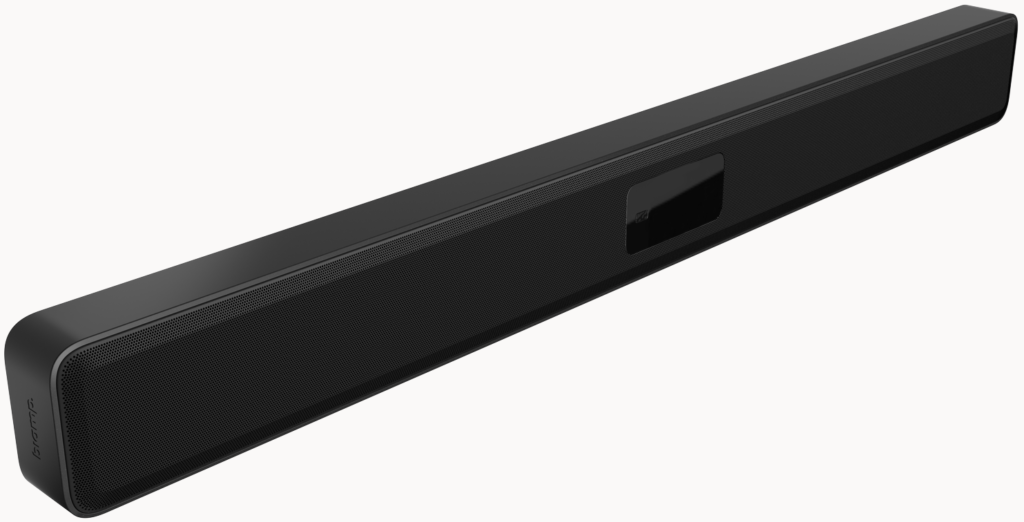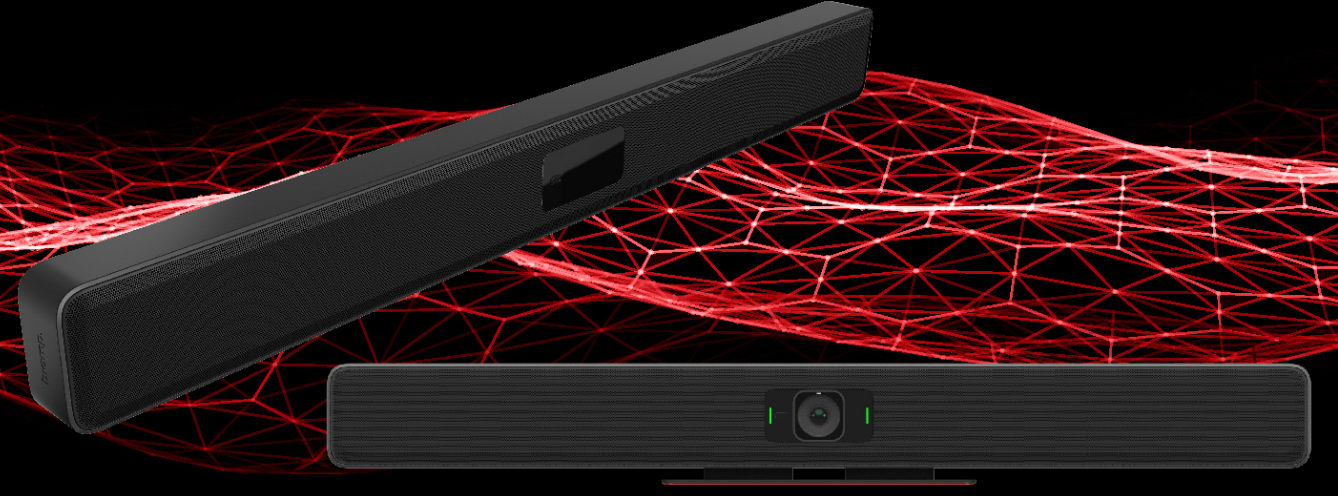A conferencing bar (similar to a sound bar) is a type of loudspeaker with a very wide and low enclosure. Conferencing bars are designed this way for acoustical reasons and to enable easy mounting above or below meeting room display screens. There are multiple speakers inside a conferencing bar cabinet, including a subwoofer in higher-end models. With speakers that work together to generate high-quality audio output, conferencing bars are cost-effective solutions that can dramatically improve the audio quality in your meeting/conference room.
How is a conferencing bar different than a sound bar?
Thanks to modern technology, display screens are getting thinner and lighter, providing several benefits, including a more aesthetic design, increased portability, better visual quality with LED and OLED screens, and more. The main disadvantage, however, is that today’s display screens’ sleeker form factors leave less room for built-in speakers, which compromises the audio output (especially the bass response). Which is why sound bars are common peripherals in many home theaters. They deliver excellent audio quality with effective bass response—no more relying on inadequate rear-facing speakers on display screens.
But professional conference rooms are not home theaters, so ensuring not only high-quality audio—but also highly intelligible audio—is critical in the overall effectiveness of any presentation or collaborative activity.
Conferencing bars are designed for the rigors and demands of professional environments. They can be connected to the display screen with only one cable, eliminating the unsightly mess normally associated with multi-speaker conferencing audio systems. Finally, conferencing bars are relatively small, light, and easy to mount above or under a display screen—an important factor when the aesthetics of professional meeting spaces must be considered.

Advantages of having a conferencing bar in a meeting room
The modern workplace is completely digitalized, and employees now use the same devices and media they use at home and in their free time. Meetings and presentations no longer involve a slide deck with a white background and a chunk of text. Hosts of modern meetings desire to create multisensory experiences that combine audio, video, live streams, videoconferencing, and more.
Therefore, the importance of high-quality audio output in every meeting room should not be underestimated. The scientific theory of multisensory learning claims individuals can better understand and remember when information is communicated using more than one sense. Putting science aside, we’re sure you have experienced poor-quality audio when watching a video or while in a Skype call. It’s frustrating, distracting, and disruptive.
Learn more about Biamp’s lineup of Parlé audio and video conferencing solutions.
